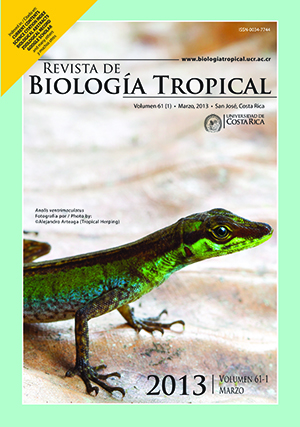Resumen
Sepia pharaonis es una importante especie endémica comercial del trópico Indo-Pacífico. A pesar de su valor comercial, hay muy poca información de sus poblaciones naturales disponible. En este estudio se describen aspectos como composición de tallas, relación longitud-peso, tasas de captura, reclutamiento estacional y patrones de crecimiento entre cohortes de la población (Clado C), distribuidos a lo largo del Mar Arábigo del Este (costa Suroeste de India). Se obtuvo la Longitud del Manto Dorsal (LMD) y el peso de las capturas de los arrastres comerciales, de Abril 2002 a Octubre 2006. Los datos fueron analizados mediante FiSAT y von Bertalanffy. Se capturó un total de 12 454 sepias, con una longitud entre 4-41cm. Los patrones de composición de tallas discriminaron dos pulsos en el reclutamiento de la pesquería, perceptibles por una disminución en el tamaño promedio mensual de la población. Los LMD de las dos cohortes estacionales se sometieron a un análisis de progresión modal mediante el método de Bhattacharya para la estimación del crecimiento. La primera cohorte (después de los monzones) mantiene la principal pesquería, se compone de individuos medianos de rápido crecimiento, mientras que el segundo grupo (pre-monzón) está compuesto por individuos de crecimiento lento y de gran tamaño. Se encontraron diferencias en las características de crecimiento entre sexos y la duración de vida útil se estima en menos de 2.3 años para machos y 2.1 años para hembras. Se observó crecimiento alométrico negativo entre el peso (W) y la longitud (L) para machos (W=0.33069. L2.5389) y hembras (W=0.32542.L2.6057). Las hembras fueron más pesadas en comparación con los machos en cualquier longitud de manto. La temporada de pesca más importante fue de mayo a noviembre, cuando se tuvieron las tasas de captura mensual más altas, de 1.67-13.02kg/h en comparación con 0.03-0.85kg/h entre diciembre y abril. Las tasas de captura estacional indican un ciclo de vida migratorio de S. pharaonis entre las zonas marinas y costeras de las áreas someras.##plugins.facebook.comentarios##
Descargas
Los datos de descargas todavía no están disponibles.






